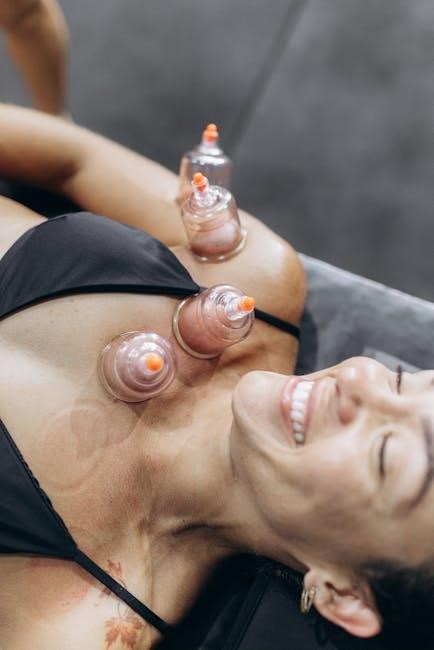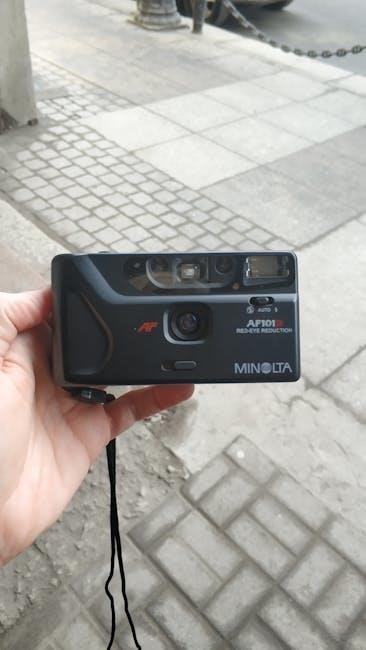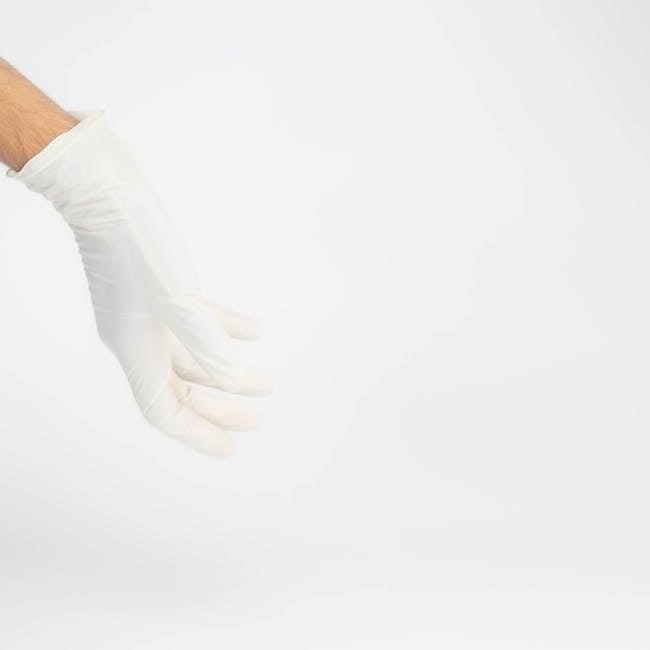AirCurve 10 ST-A Clinical Manual: A Comprehensive Guide

This clinical manual provides essential information for healthcare professionals using the ResMed AirCurve 10 ST-A device. It covers indications, usage guidelines, and technical specifications for effective non-invasive ventilation. Access instructions and data insights for optimal patient therapy management, whether in a hospital or at home.
The AirCurve 10 ST-A is a bilevel positive airway pressure (BiPAP) device manufactured by ResMed, designed to provide non-invasive ventilation for patients with respiratory insufficiency or obstructive sleep apnea (OSA). This advanced device delivers synchronized therapy, adapting to the patient’s breathing patterns to ensure optimal comfort and efficacy. The AirCurve 10 ST-A is suitable for both home and hospital use, offering versatility in various clinical settings.
This clinical manual serves as a comprehensive guide for healthcare professionals, providing detailed information on the device’s features, operation, and maintenance. It includes instructions for setting up the device, navigating the user interface, and monitoring therapy data. The manual also covers important safety precautions and troubleshooting tips to ensure safe and effective use of the AirCurve 10 ST-A.
Furthermore, this manual highlights the integration of the AirCurve 10 ST-A with ResMed’s AirView, a cloud-based patient management system. AirView allows clinicians to remotely monitor patient therapy data, adjust settings, and provide timely interventions, enhancing patient care and adherence to treatment plans. The AirCurve 10 ST-A represents a significant advancement in non-invasive ventilation technology.
Indications for Use
The AirCurve 10 ST-A is specifically indicated for providing non-invasive ventilation to patients weighing more than 30 pounds (13 kg) who suffer from respiratory insufficiency or obstructive sleep apnea (OSA). This device is designed to support patients who require assistance with breathing due to various underlying conditions. It is crucial to assess each patient’s individual needs and medical history before initiating therapy with the AirCurve 10 ST-A.
Furthermore, the iVAPS (intelligent Volume-Assured Pressure Support) mode is indicated for patients weighing more than 66 pounds (30 kg). This mode ensures that patients receive a consistent tidal volume, adapting to their changing respiratory needs throughout the night. The AirCurve 10 ST-A is suitable for patients with chronic respiratory conditions, neuromuscular disorders, or those recovering from acute respiratory events.
It is important to note that the AirCurve 10 ST-A should only be used under the guidance and supervision of a qualified healthcare professional. Proper patient selection, device setup, and ongoing monitoring are essential to ensure safe and effective therapy. This clinical manual provides detailed instructions and guidelines to assist healthcare providers in appropriately utilizing the AirCurve 10 ST-A for optimal patient outcomes. Always consult the latest clinical guidelines and patient-specific factors when determining the suitability of this device.

Patient Weight Considerations
When utilizing the AirCurve 10 ST-A, patient weight is a critical factor in determining appropriate therapy settings and ensuring optimal device performance. The AirCurve 10 ST-A is indicated for non-invasive ventilation in patients weighing more than 30 lb (13 kg). This weight threshold is essential for the device to deliver the intended therapeutic benefits safely and effectively.
For the iVAPS (intelligent Volume-Assured Pressure Support) mode, a different weight consideration applies. The iVAPS mode is specifically indicated for patients weighing more than 66 lb (30 kg). This higher weight threshold reflects the specific requirements of the iVAPS algorithm, which is designed to provide consistent tidal volume delivery based on the patient’s respiratory needs. Using iVAPS in patients below this weight may not yield the intended therapeutic outcomes and could potentially lead to adverse effects.
Healthcare providers must carefully assess each patient’s weight before initiating therapy with the AirCurve 10 ST-A, paying close attention to the specific mode of ventilation being employed; Accurate weight measurement and documentation are crucial for proper device configuration and monitoring. Failure to adhere to these weight guidelines may compromise the safety and efficacy of the therapy. Regular monitoring of the patient’s weight and respiratory status is recommended throughout the course of treatment.
Home and Hospital Use
The AirCurve 10 ST-A is designed for versatile application in both home and hospital settings, offering a consistent and reliable non-invasive ventilation solution across different care environments. Its portability and user-friendly interface make it suitable for patients transitioning from hospital to home, ensuring continuity of care. In the hospital setting, the AirCurve 10 ST-A can be easily integrated into existing respiratory support systems, providing clinicians with a flexible tool for managing various respiratory conditions.
For home use, the device’s ease of setup and operation empowers patients to manage their therapy independently, promoting adherence and improving quality of life. Clear instructions and readily available support materials, such as user manuals, facilitate patient education and troubleshooting. Regular monitoring through ResMed AirView allows healthcare providers to remotely track patient progress and adjust therapy settings as needed, optimizing outcomes and minimizing the need for frequent in-person visits.
In both settings, adherence to proper cleaning and maintenance procedures is crucial to ensure the device’s longevity and prevent infection. The AirCurve 10 ST-A’s robust design and comprehensive safety features make it a reliable choice for long-term ventilation support, whether in the controlled environment of a hospital or the comfort of the patient’s home. The flexibility and adaptability of the AirCurve 10 ST-A contribute to its effectiveness in managing respiratory insufficiency and obstructive sleep apnea across diverse patient populations and care settings.
iVAPS Mode Specifications
The intelligent Volume-Assured Pressure Support (iVAPS) mode on the AirCurve 10 ST-A is a sophisticated ventilation setting designed to deliver personalized and consistent support for patients with varying respiratory needs. iVAPS automatically adapts to the patient’s changing respiratory rate, inspiratory time, and target alveolar ventilation, ensuring optimal gas exchange and reducing the work of breathing. This mode is particularly beneficial for patients with neuromuscular disorders, COPD, or other conditions that compromise respiratory muscle strength and endurance.
Key specifications of the iVAPS mode include a target tidal volume range that can be adjusted based on the patient’s ideal body weight and clinical condition. The device continuously monitors the delivered tidal volume and adjusts the inspiratory pressure support to meet the set target, providing consistent ventilation even during periods of fluctuating respiratory effort. Additionally, iVAPS incorporates an intelligent backup rate that ensures a minimum number of breaths per minute in case of patient apnea or significant reductions in spontaneous breathing.
The algorithm also features adjustable inspiratory and expiratory trigger sensitivity settings, allowing clinicians to fine-tune the device’s responsiveness to the patient’s breathing pattern. Safety features include alarms for high and low tidal volume, high and low respiratory rate, and circuit disconnection, ensuring prompt intervention in case of adverse events. The iVAPS mode requires careful titration and monitoring by trained healthcare professionals to optimize patient comfort and efficacy.
AirCurve 10 ST-A Components and Setup
The AirCurve 10 ST-A system comprises several key components essential for effective non-invasive ventilation. These include the main AirCurve 10 ST-A device, a humidifier (optional but recommended), air tubing, a power supply unit, and a patient interface (mask). The device itself houses the internal blower, pressure sensors, and electronic controls that regulate and deliver the prescribed therapy. The humidifier, when used, adds moisture to the air, enhancing patient comfort and reducing nasal dryness.
Setting up the AirCurve 10 ST-A involves connecting the various components in a specific sequence. First, attach the air tubing to the outlet port on the device and the corresponding port on the humidifier (if applicable). Next, connect the other end of the air tubing to the patient mask. Ensure all connections are secure to prevent air leaks. The power supply unit should then be plugged into the device and a suitable electrical outlet.
Before initiating therapy, fill the humidifier chamber with distilled water to the indicated fill line. Once the physical connections are established, power on the device. The initial setup may involve configuring therapy settings such as pressure levels (IPAP and EPAP), respiratory rate, and inspiratory time, as prescribed by a healthcare professional. It is crucial to follow the manufacturer’s instructions and clinical guidelines for optimal setup and operation. Proper component assembly and accurate settings are vital for safe and effective ventilation.
User Interface and Navigation
The AirCurve 10 ST-A features a user-friendly interface designed for ease of navigation and adjustment of therapy settings. The interface typically consists of a color LCD screen and a set of control buttons or a dial. The LCD screen displays essential information such as current therapy mode, pressure levels (IPAP and EPAP), respiratory rate, inspiratory time, and any active alarms or warnings. The screen also provides access to menus for adjusting settings and reviewing therapy data.
Navigating the user interface involves using the control buttons or dial to scroll through menu options and select desired functions. Common menu options include setting the therapy mode (e.g., CPAP, S, ST, T, iVAPS), adjusting pressure levels, setting ramp time, enabling or disabling the humidifier, and accessing comfort features like expiratory pressure relief (EPR). The interface also allows users to view cumulative therapy hours, leak rates, and other relevant data.
The intuitive design of the user interface enables clinicians and patients to easily monitor and adjust therapy settings. The device provides visual cues and prompts to guide users through the setup and operation process. Additionally, the interface includes built-in help functions that offer explanations of various settings and troubleshooting tips. Familiarizing oneself with the user interface is crucial for optimizing therapy and ensuring patient comfort and compliance.
Therapy Data and Monitoring with ResMed AirView
The ResMed AirCurve 10 ST-A offers comprehensive therapy data recording and remote monitoring capabilities through ResMed AirView, a cloud-based patient management system. AirView allows healthcare providers to remotely access and analyze patient therapy data, enabling timely intervention and personalized therapy adjustments. The device automatically uploads data to AirView via a built-in wireless module or SD card.

AirView provides a range of data insights, including usage hours, pressure levels, respiratory rate, tidal volume, leak rates, and AHI (Apnea-Hypopnea Index). Clinicians can use this data to assess patient adherence, identify potential issues, and optimize therapy settings. AirView also offers detailed reports and trend analysis tools for tracking patient progress over time.
Remote monitoring with AirView facilitates proactive patient management and reduces the need for frequent in-person visits. Clinicians can remotely adjust therapy settings, provide feedback, and troubleshoot issues, improving patient compliance and outcomes. AirView also enables automated alerts for significant events, such as high leak rates or prolonged periods of non-use. This allows clinicians to respond promptly and address any concerns. ResMed AirView enhances the efficiency and effectiveness of therapy management, ensuring patients receive the optimal level of support and care.
Cleaning and Maintenance Procedures

Proper cleaning and maintenance of the AirCurve 10 ST-A and its accessories are crucial for ensuring optimal performance and preventing infection. Regular cleaning helps to remove dust, debris, and microorganisms that can accumulate over time. Before cleaning, always disconnect the device from the power outlet and allow it to cool down.
The AirCurve 10 ST-A device should be wiped down daily with a clean, damp cloth. Avoid using harsh chemicals, abrasive cleaners, or immersing the device in water. The air tubing and humidifier chamber should be washed at least weekly with warm, soapy water. Rinse thoroughly and allow to air dry completely before reassembling. The air filter should be inspected regularly and replaced every six months, or more frequently if it appears dirty or damaged.
The mask should be cleaned daily according to the manufacturer’s instructions. Most masks can be washed with warm, soapy water. Inspect the mask for wear and tear and replace it as needed. The humidifier water should be emptied daily and refilled with distilled water to prevent mineral buildup. Regular cleaning and maintenance will help to prolong the life of your AirCurve 10 ST-A and ensure effective therapy.
Troubleshooting Common Issues
The AirCurve 10 ST-A is a reliable device, but users may encounter occasional issues. One common problem is air leakage from the mask, which can reduce therapy effectiveness. Ensure the mask is properly fitted and adjusted, and check for any damage or wear that may be causing leaks. If leakage persists, try a different mask size or style.
Another issue is the device not turning on. Verify that the power cord is securely connected to both the device and the power outlet. Check the power outlet to ensure it is functioning correctly. If the device still does not turn on, contact a qualified technician.
If the device displays an error message, consult the user manual for troubleshooting steps specific to that error code. Common error messages may indicate issues with the tubing, humidifier, or internal components. Ensure the tubing is properly connected and not blocked or damaged. Check the humidifier water level and ensure it is not empty. If the problem persists, contact your healthcare provider or a qualified technician for assistance. Addressing issues promptly helps maintain consistent and effective therapy.
Warnings and Precautions
The AirCurve 10 ST-A is designed for safe and effective non-invasive ventilation, but certain warnings and precautions must be observed. Always read the entire user guide before operating the device to understand potential risks and proper usage. This device should only be used under the guidance of a qualified healthcare professional.
Do not use the AirCurve 10 ST-A if you experience unusual chest pain, severe headache, or increased shortness of breath. These symptoms may indicate a serious medical condition requiring immediate attention. Discontinue use and consult your physician. Exercise caution when using supplemental oxygen with the device, as oxygen can support combustion. Keep oxygen sources away from open flames or heat sources.
The AirCurve 10 ST-A is not intended for use in patients weighing less than 30 lbs (13 kg), except when iVAPS mode is indicated for patients weighing more than 66 lbs (30 kg). Ensure the device is placed on a stable surface to prevent accidental falls or damage. Regularly inspect the device and accessories for wear and tear, and replace any damaged components promptly. Ignoring warnings and precautions can compromise patient safety and device performance.
Reassembling the Air Outlet
Connecting ClimateLineAir Heated Tubing
The ClimateLineAir heated tubing is an essential accessory for the AirCurve 10 ST-A, designed to enhance patient comfort by maintaining consistent temperature and humidity throughout therapy. Proper connection of the ClimateLineAir tubing is crucial for optimal performance and to prevent condensation buildup, which can lead to rainout in the mask.
To connect the ClimateLineAir tubing, first ensure that the AirCurve 10 ST-A device is powered off. Align the connector end of the ClimateLineAir tubing with the air outlet on the device. Gently push the tubing connector into the air outlet until it clicks securely into place. Verify that the connection is firm and there are no gaps or loose fittings.
Next, connect the other end of the ClimateLineAir tubing to your mask, ensuring a secure and airtight seal. Once both ends are connected, power on the AirCurve 10 ST-A and adjust the temperature and humidity settings to your desired comfort level. Refer to the ClimateLineAir user guide for detailed instructions and troubleshooting tips. Regular inspection of the tubing for damage or wear is recommended to maintain optimal performance and patient safety.
